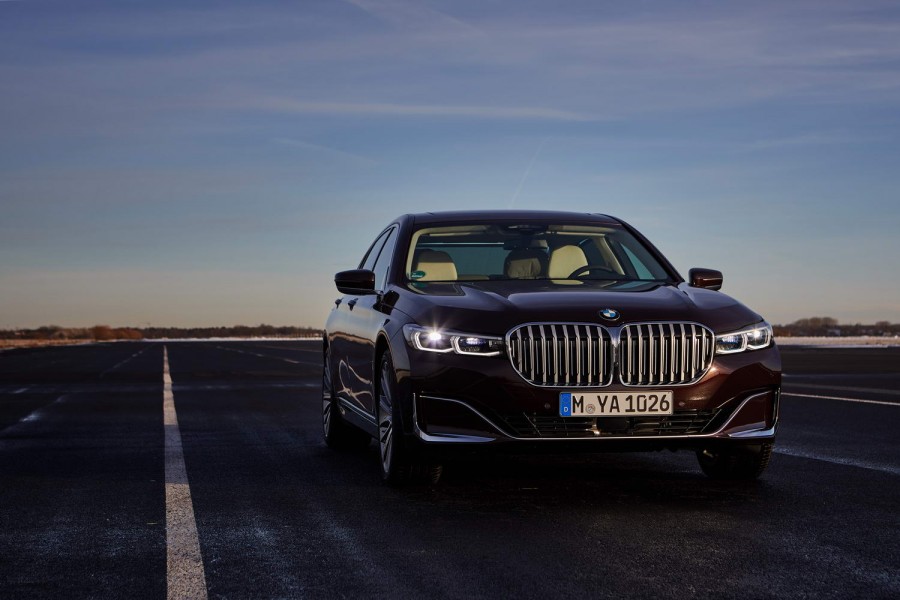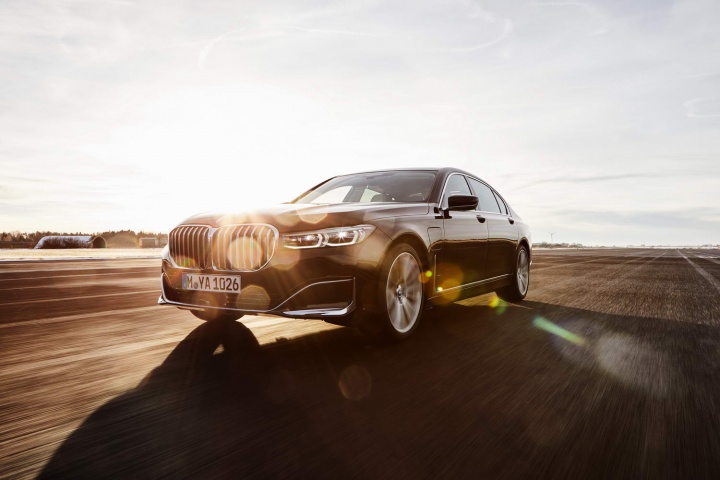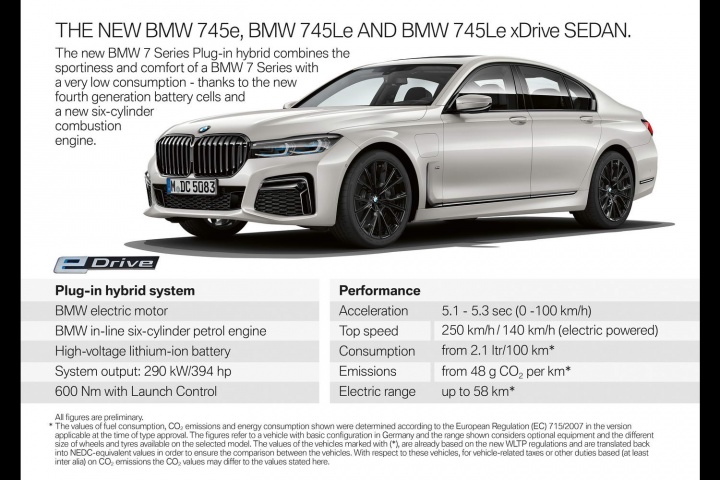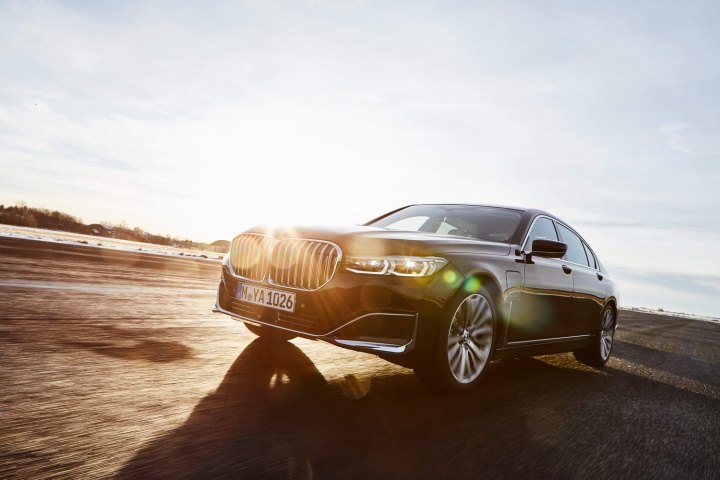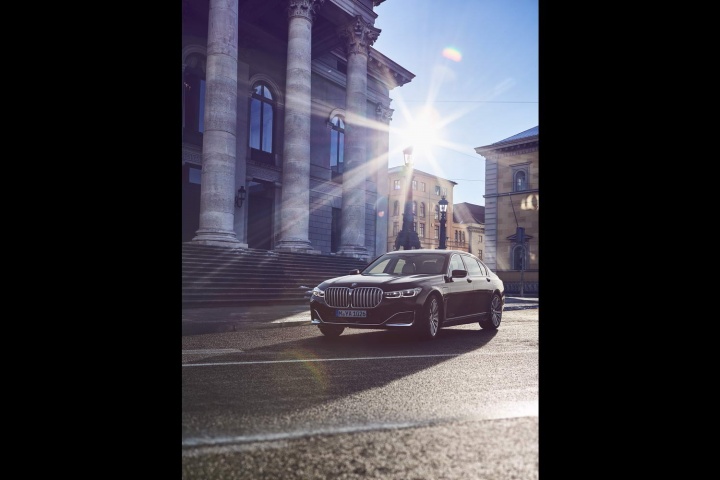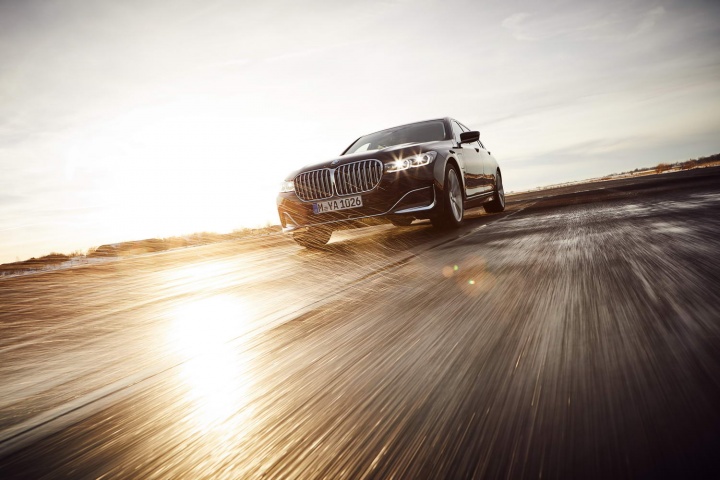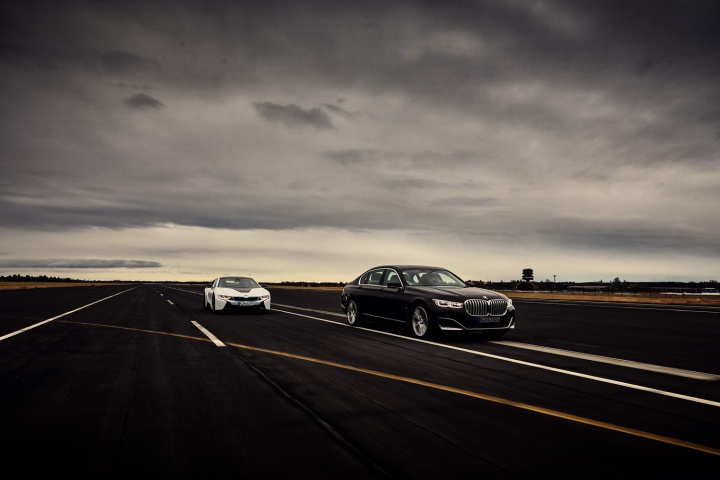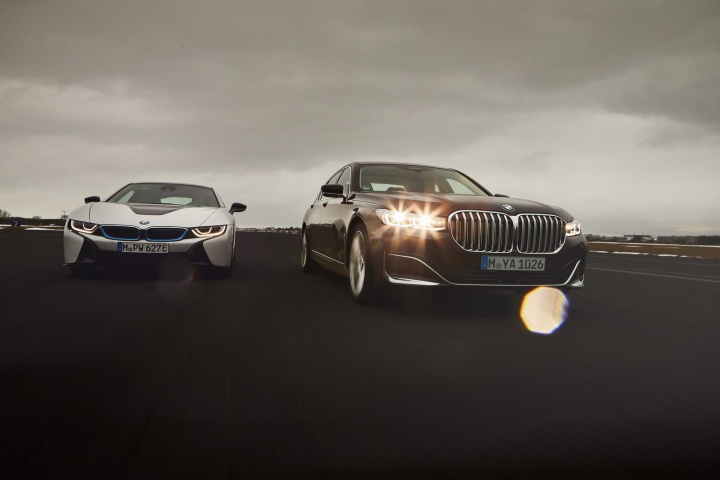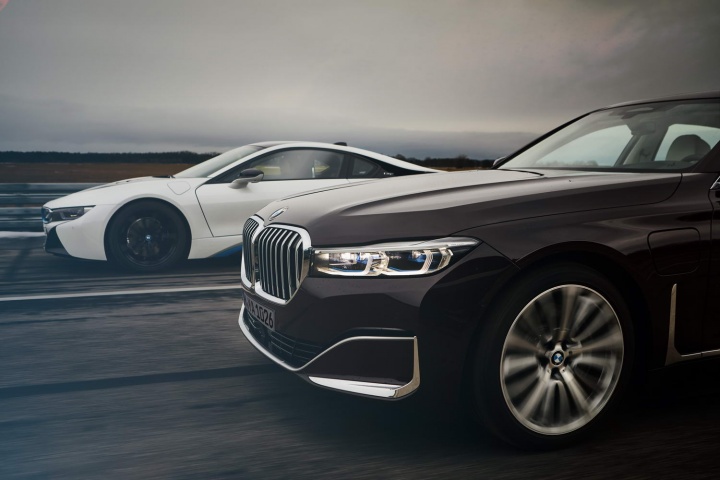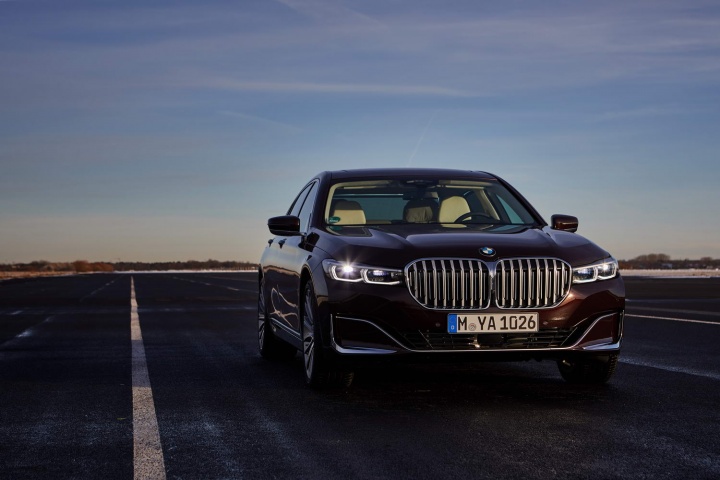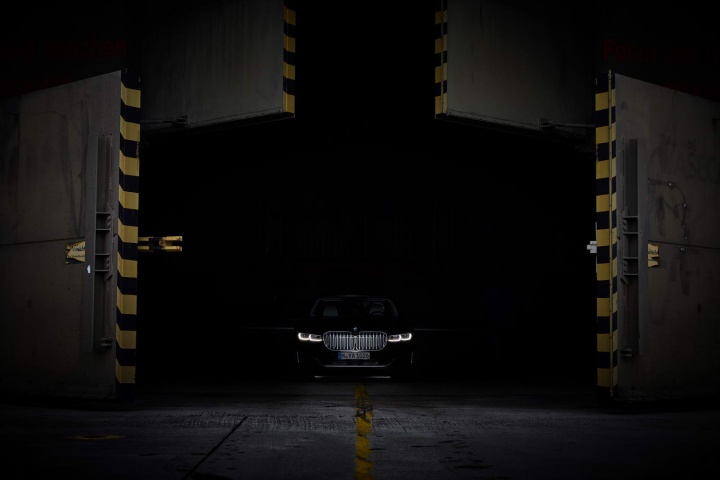What's the news?
We've already seen what the updated version of the current BMW 7 Series will look like, but now it's time to drill down a little more into the details surrounding one of the most interesting models of the revised line-up - the 745e plug-in hybrid (PHEV) variant.
As already stated, the main news here is that the 2.0-litre petrol engine - which formerly provided the combustion-powered propulsion in the superseded 740e - has been replaced with a 3.0-litre inline-six. BMW will offer this hybridised drivetrain in three distinct models: as the short-wheelbase, rear-wheel-drive 745e; as the long-wheelbase, rear-wheel-drive 745Le; and with the same long body, but now with the addition of all-wheel-drive security, in the 745Le xDrive.
Chief changes to the electrical bits revolve around a lithium-ion battery, with the very latest cell technology, that has had its storage capacity increased from 7.4kWh before, to 12kWh on the 745e. The electric motor remains rated at 83kW (113hp), but it is said to have slightly more torque, with 265Nm now as opposed to 250Nm on the 740e. Coupling that with the 286hp 3.0-litre six, the peak overall system output is 394hp with an assisting 600Nm - these figures accessed when the Drive Performance Control switch is set to 'Sport'.
That's enough power to see the 745e hit 100km/h from rest in 5.2 seconds, while the heavier 745Le takes 5.3 seconds to achieve the same sprint. The all-wheel-drive 745Le xDrive has greater off-the-mark traction, though, so it records a 5.1-second time, with all three PHEV Sevens restricted to 250km/h. This maximum velocity depends on the combustion engine being in play, but on electric power alone the 745s can all go 20km/h faster than the old 740e models, with a limited ceiling of 110km/h in Hybrid mode and a full EV restrictor set at 140km/h.
In addition to this, BMW is quoting a greater all-electric range for the 7 Series PHEVs. The 745e can do anything between 54 and 58km in zero-emissions mode, the 745Le will go between 52 and 55km in the same circumstances, and the 745Le xDrive will achieve an electric range of between 50 and 54km. BMW also says the best combined fuel consumption is 2.1 litres/100km (134.5mpg) from the 745e and the least efficient is the 745Le xDrive with 2.6 litres/100km (108.6mpg). The official CO2 emissions are anything between 48g/km and 59g/km, which means the PHEV BMWs will be cheap to tax.
BMW integrates the electric motor into the 745's eight-speed Steptronic transmission, where it can act as a generator in braking and coasting phases, feeding energy into the high-voltage battery. This is mounted underneath the rear seats, while the BMW's 46-litre fuel tank is located above the rear axle, meaning there's still a 420-litre boot (a bit smaller than a conventional Seven's trunk, but not bad), which can be accessed from the cabin by 40:20:40 split-folding rear-seat backs.
Anything else?
BMW says it will bring new digital services for the plug-in hybrid models of the 7 Series by summer 2019, which will help owners find convenient and available charging points on their route.

